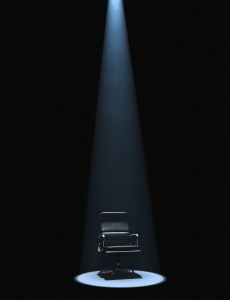 We’ve been having a Sequel office re-shuffle – with new staff joining us at the end of the month and moving our expanding design floor from the attic to the, much more spacious, basement.
We’ve been having a Sequel office re-shuffle – with new staff joining us at the end of the month and moving our expanding design floor from the attic to the, much more spacious, basement.
Debates have ensued – does anyone ever really like having their back to the room – new staff heights have been estimated to take a guess at how far their chair will move back, and the rulers have come out in an attempt to measure desks before trying to shift them.
Seating isn’t something you may first consider as a factor effecting employee engagement but just think – where you sit at work will impact the friends you make, the connections you make on your team, your stress levels (consider how you would feel if your boss was constantly able to view your screen) and consequently how well you can work and how engaged you feel.
Some companies use hot-desking as a way for employees to meet new people. It adds an element of flexibility that is becoming more and more sought after in the modern day workplace. However, its success is a debatable point. As HC online states:
“…hot-desking can increase opportunities to meet new people, exercise choice and experience a greater sense of freedom. However, it has also been associated with feelings of isolation and lack of team cohesion.”
In some cases businesses go half of the way there, giving employees who are in the office five days a week permanent desk spaces and others, who work from home but come into the office maybe once or twice a week, the ability to hot desk. Logistically this makes sense but hardly seems to really encourage home-workers to feel part of the same team and be able to build relationships with their colleagues.
But, to go back to all employees having a permanent set desk, will it ever be possible to create a seating plan that will keep everyone happy?
Planning seating around employee engagement can be tricky – you need to ensure enough space for collaboration between teams and individuals while enabling staff to have the privacy needed to concentrate. Open-plan offices, for example, come under fire in Bloomberg Business Week, who also emphasis that the “key to making workers happy and productive is having a mix of spaces for different activities” – not always logistically or financially possible but a good thing to aspire to.
Companies need to think carefully about who to put where, especially when introducing new staff. Co-founder of Kayak.com, Paul English, uses new hires as an excuse to shift around existing floor plans, taking into account factors such as employees’ personalities and even their political views when deciding who sits where. He sums up his reasoning well: “If I put someone next to you that’s annoying or there’s a total style clash, I’m going to make your job depressing.”
So, maybe this is the answer – providing workplace musical chairs where seating plans are altered every few months; allowing for the positives of hot-desking, while minimising the negatives. Whatever the method that appears right for your company, the most important thing is to remember how much the seating plans can matter.